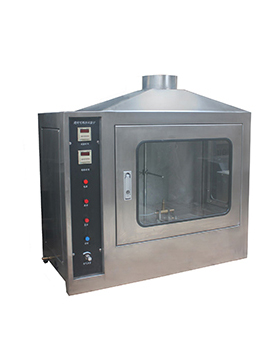Site: Home > News and events 

Specification for flammability test of building materials and products
Building materials and products flammability test specification is very important to ensure the safety of human life and property in the building. Fires caused by burning building materials and products often result in casualties and property damage, forcing people to develop appropriate codes and test methods to solve the problem of burning properties of building materials and products.
Today's test methods are many and wide-ranging, with test samples ranging from powdered to full-size fire tests. Test methods are also affected by the special provisions of the material combustibility test parameters, the flame intensity applied to the surface of the material, the size of the test sample and many other factors. At the same time, some special provisions such as sample orientation, flame intensity, etc., so that the test results of some existing specifications do not match the test results of building materials or products in full-size simulated fire conditions, and therefore, the test methods have to be modified or replaced for certain materials or products with special requirements.
At present, the burning test results of building materials and products are often used to characterize the flame propagation distance. 1970s, the international comparison of material burning test results are based on different test methods for material classification determination, which is tantamount to generating random numbers, the test results are almost not comparable.
Combustibility requirements for building materials and products in the United States
The U.S. International Building Code and other building codes, the National Fire Protection Association 101 (NFPA 101) - Life Safety Code and other test methods and standards for the combustibility of building materials and products and their hazards are all relevant provisions. In the United States, the publicly accepted determination criteria and grading methods generally refer to the provisions of the International Building Code, which is also the main building code in the United States. All of the above codes require testing of the combustibility and flame propagation characteristics of building materials, and their test methods correspond to ASTM E136 (combustibility) and ASTM E84 (flame propagation), respectively, with ASTM E84 also specifying the characteristics of visible smoke.

Flammability Test Methods
The U.S. test method for classifying noncombustible materials is ASTM E136, which tests the thermal behavior of materials in a vertical tubular furnace at 750°C. ASTM E136 requires the measurement of four samples of each material or product, of which three samples pass the test, the material can be judged as non-combustible. Specific requirements for determination: if the weight loss of the test sample is not greater than 50%, the first 30s after the start of the test, the first sample surface and internal temperature rise does not exceed 30 ℃, followed by the sample does not burn; if the weight loss of the test sample is greater than 50%, the temperature of the material does not exceed the temperature measured before the test when the material reaches stability, and the sample does not burn during the entire test.
ASTM E136 standard notes section of the standard test methods and principles are explained. It is noted that ASTM E136 has an important flaw in that it does not quantitatively measure the heat release rate or flammability of a material, but only qualitatively gives a pass/fail test result. Nevertheless, ASTM E136 is also a very stringent test, and testing materials containing even just a small amount of combustible components will often result in test failure. Therefore, according to ASTM E136, materials containing combustible adhesives and mineral wood insulation, slag concrete, composites of cement and wood chips, and wood fiber reinforced gypsum board are judged to be combustible. The core of gypsum wallboard can meet the noncombustibility requirements, while paper-faced gypsum wallboard cannot pass the noncombustibility test.
In addition, the flame retardant treatment of combustible materials does not make them noncombustible, and their test results do not meet the requirements of ASTM E136. It is believed that E136 can also provide quantitative data to support performance-based fire design.
In order to classify those materials with low combustibility, other test methods are needed, such as the test method for latent heat of construction materials specified in NFPA 259. The latent heat of combustion of a material is the difference between the total heat of combustion measured by the material in the oxygen bomb calorimetric juice and its measured heat of combustion after being placed in a furnace at 750°C for 2 hours.
In NFPA 101 Life Safety Code, this test method is used as a standard for determining the latent heat of combustion of flame-retardant materials, which should be less than 8140 kJ/kg. cone calorimeter test as a standard test for determining the combustion performance of materials, but they also pointed out that the grading system generated by this method may disrupt the existing grading system of materials.
2021-09-28 11:20
- Related News
Automatic Cross-Hatch Tester | PV 3952, Ford BN 108-03,GM N 14688 Compliant
Multi-Finger Scratch/Mar Tester | Automotive Plastics & Interior Materials T
Dental Material Color Stability Tester | ISO 4049 / YY 0270 / ASTM G155 Complian
Masks Bacterial Filtration Efficiency (BFE) Tester | YY 0469 / ASTM F2100 / BS E
Smoke Density Tester | ASTM E662 / ISO 5659-2 Compliant
Dry Microbial Penetration Resistance Tester | ISO 22612 / YY/T 0506.5
Dry Fallen Wadding Tester — YY/T 0506.6 | ISO 9073-10 | EN 13795-2
Fogging Tester | Automotive Interior Volatile Fogging Test System
